If you thought the Dalmatian coast was the only place worth visiting in Croatia, think again — Croatia is full of interesting things to see and do, and Zagreb is no exception. Here is how to figure out how long you’ll need to see the best of the Croatian capital. Knowing how many days it takes to get a feel for the city is crucial to planning a trip here. So, with that in mind, let’s take the plunge and start you on the road to having a fantastic time.
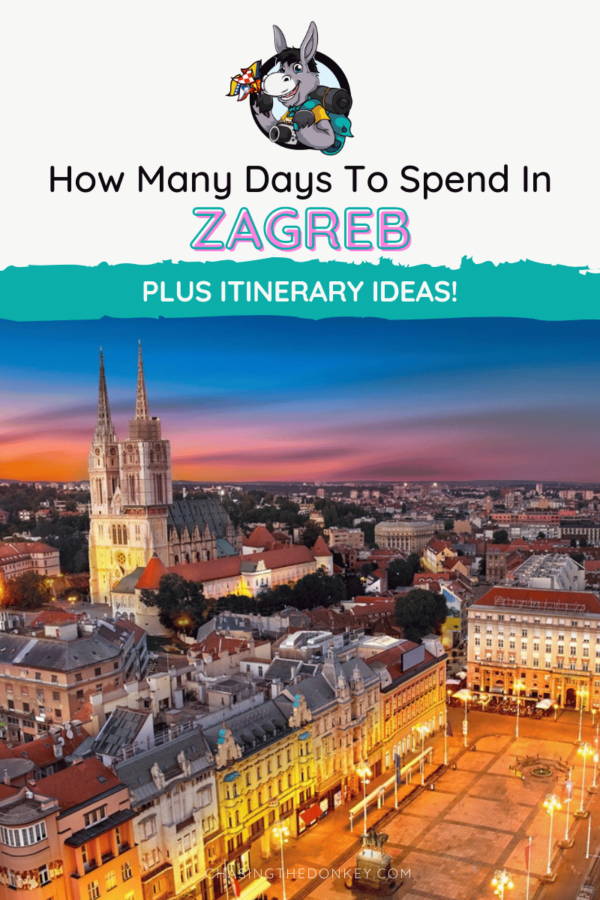
Skip Ahead To My Advice Here!
So, How Many Days In Zagreb Should You Plan?
It’s a good question: How many days will you need in Zagreb to make your trip worthwhile? We’ll examine what you can hope to see and do in the city depending on the amount of time you can spare. This is a key factor in working out the ideal Zagreb itinerary for you.
As the capital of Croatia, Zagreb is home to culture and history galore. While the country is more famous for its coastline, beaches, and medieval old towns (not to mention Game of Thrones filming locations), there are plenty of reasons to spend some time exploring Croatia’s inland capital city.
Zagreb has something for everyone. There are cool cafes to discover, art galleries and museums to visit (over 60!), parks to wander around, and a whole host of bars and restaurants to try out.
How Many Days In Zagreb Is Enough
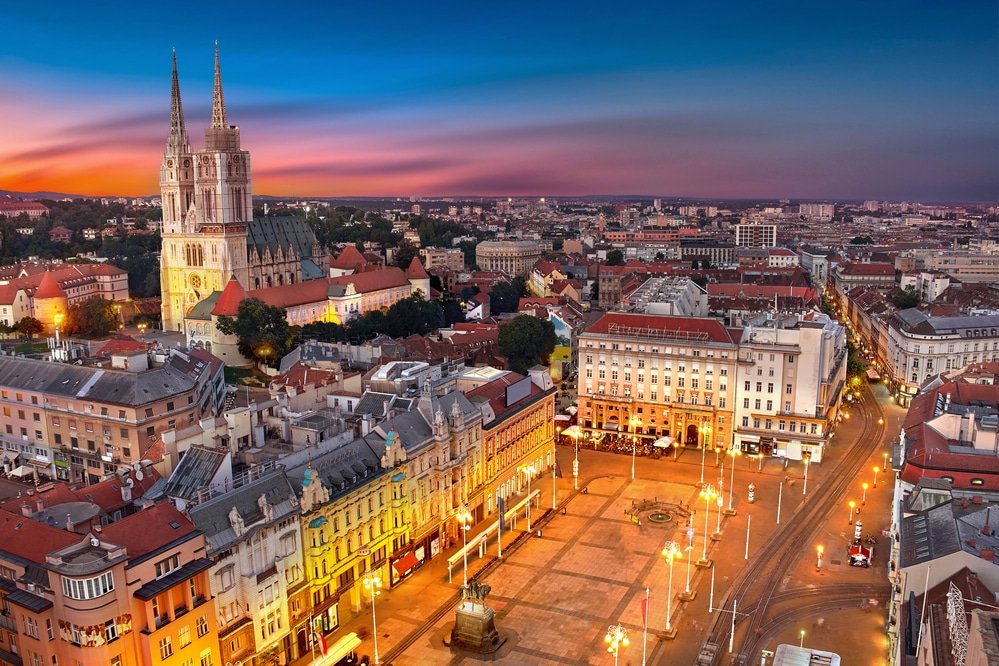
Any amount of days is enough time to explore at least one aspect of the city, but in general, the more time you give yourself, the less rushed you’ll have to be when getting around.
Even with one day in Zagreb, you can see a decent amount of the city. For a more in-depth trip, it’s possible to see Zagreb in 2 days. Add more days, and you’ll really be able to get a feel for the city and experience the best of what Zagreb has to offer.
How To Spend 2 Days In Zagreb
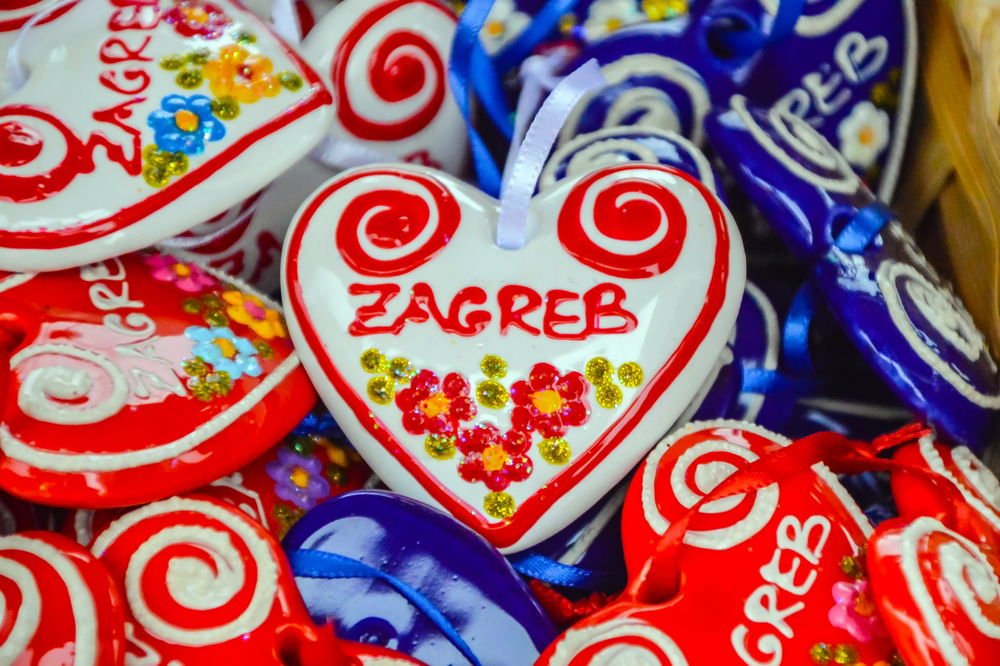
Spend two days in Zagreb, and you’ll be able to see most of the city’s cultural and historical hotspots. Two days is enough time to visit the top museums and experience some Zagreb cafe (and pub) culture. Your 48-hour itinerary in Zagreb would be packed with things to do.
How To Spend 3 Days In Zagreb
If you spend three days in Zagreb, you’ll have more time to explore. Stroll the charming cobbled streets of the Upper Town and Lower Town and visit the Museum of Broken Relationships.
I’d say that three to four days is the perfect amount of time you’ll need to visit Zagreb and be rewarded for your time there.
How To Spend 4-5 Days In Zagreb
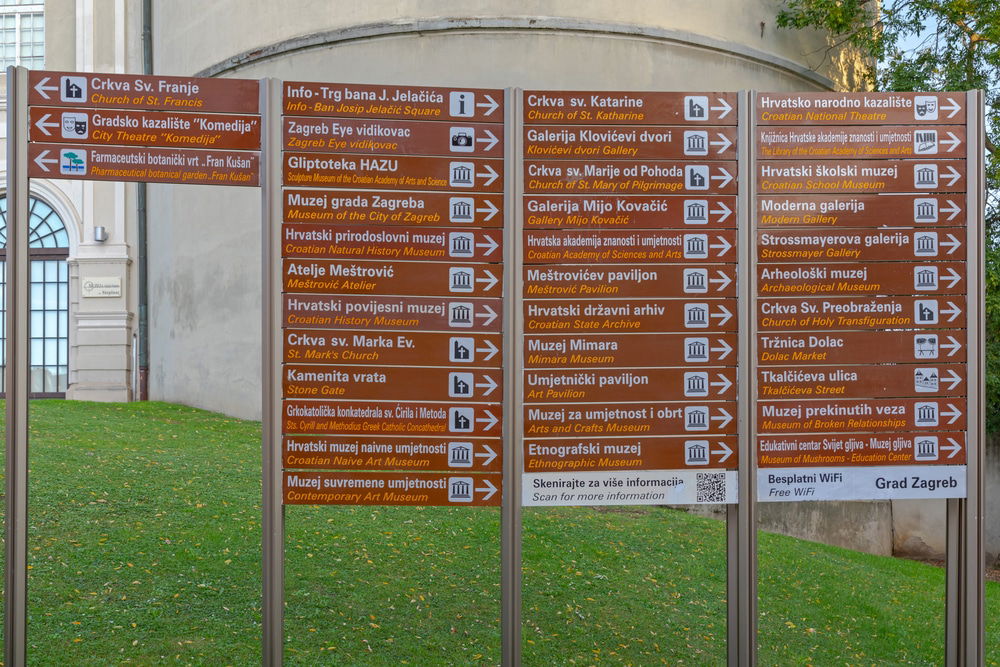
Do you have longer to spare? Then 4-5 days is a great amount of time to visit Zagreb and get off the beaten track.
You can go at a slower pace, or you could pack in even more stuff—the many, many museums (the Museum of Naive Art, for example), hang out in one of its multiple parks, or even take a day trip to Jarun Lake.
A Day Trip To Zagreb

If you’re not basing yourself in Zagreb during your vacation to Croatia, but you like the sound of this culture-packed city, then you could take a day trip to Zagreb. Traveling from Split to Zagreb can take a while, so it may not be the best option for you (i.e. if you don’t have many days to spare).
Traveling from Zadar city is also an option. If you happen to be staying there, and you feel like a day trip to Zagreb, then you’ll be pleased to know that it’s a 3-hour drive away. It’s still quite far, but it’s doable if you have the time.
How Long To Spend In Zagreb
Zagreb offers a world of charm, fun, and culture to all types of travelers. Whether you’re here for the dozens of museums in the Croatian capital or for the nightlife, here are the ultimate Zagreb itineraries for you.
Zagreb Itinerary Options
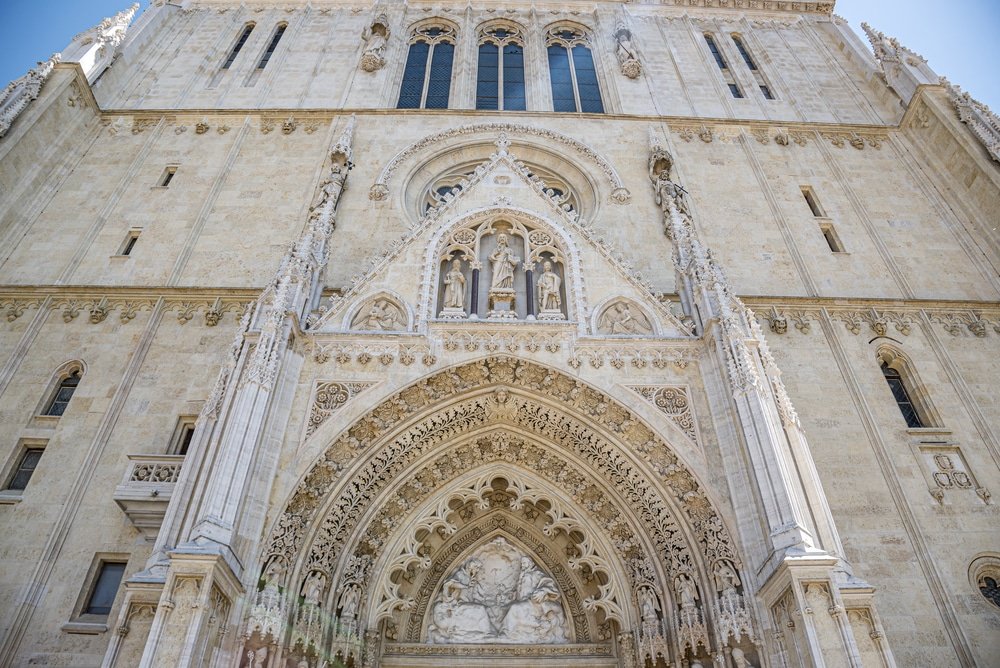
One Day In Zagreb
One day in Zagreb is enough to explore the city on a walking tour. Whether that’s an organized tour with a guide, such as this one, or if you stroll the city on a self-guided route, it’s up to you.
Must-see sights for just one day in the city include the neo-Gothic Zagreb Cathedral, the Stone Gate, Jelacic Square, Dolac Market, and a ride on the funicular railway. It’s an action-packed day, but you’ll have plenty of opportunities to take in the culture and architecture of the Croatian capital.
If you’ve only got a day here, you can use this as a good foundation for taking your next trip to Zagreb in the future.
Day Two In Zagreb (Of 48 Hours In Zagreb)
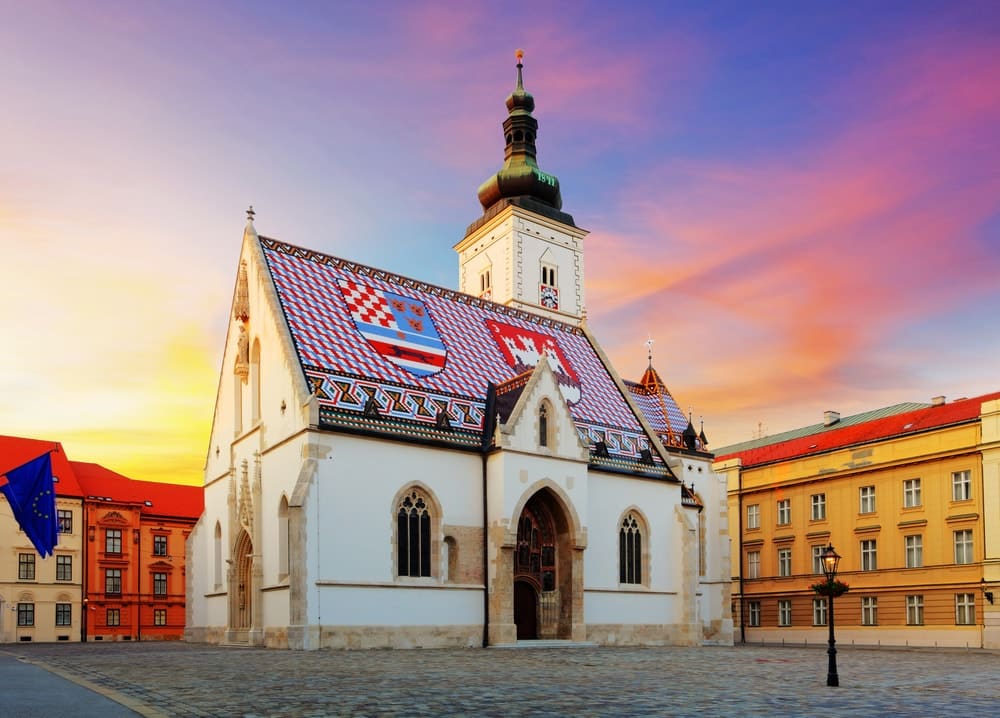
Two days in Zagreb gives you more time to discover what the city has to offer.
Spend the first day in Zagreb getting acquainted with the city (as above), and then it’s on to the second part of your 48 hours in Zagreb.
Begin day two in Zagreb in the Upper Town (the city’s old town), after which you can head to Saint Mark’s Square, the location of the 13th-century Saint Mark’s Church with its colorful roof. You can also see the Croatian Parliament Building here.
From here, it’s time to head onwards to the Museum of Broken Relationships. Dedicated to heartbreak and failed relationships, the exhibits here have all been donated by people from all over the world, representing different aspects of relationships that have ended.
Next up is the Lotrscak Tower. Climb this 13th-century medieval structure to take in panoramic views of the city. Top tip: arrive here at midday to experience the cannon being fired to mark the time, which is part of a long tradition.
Then, finish by riding the funicular back to Lower Town and experiencing the lively nightlife in the area between Hotel Dubrovnik and Flower Square.
Day Three In Zagreb
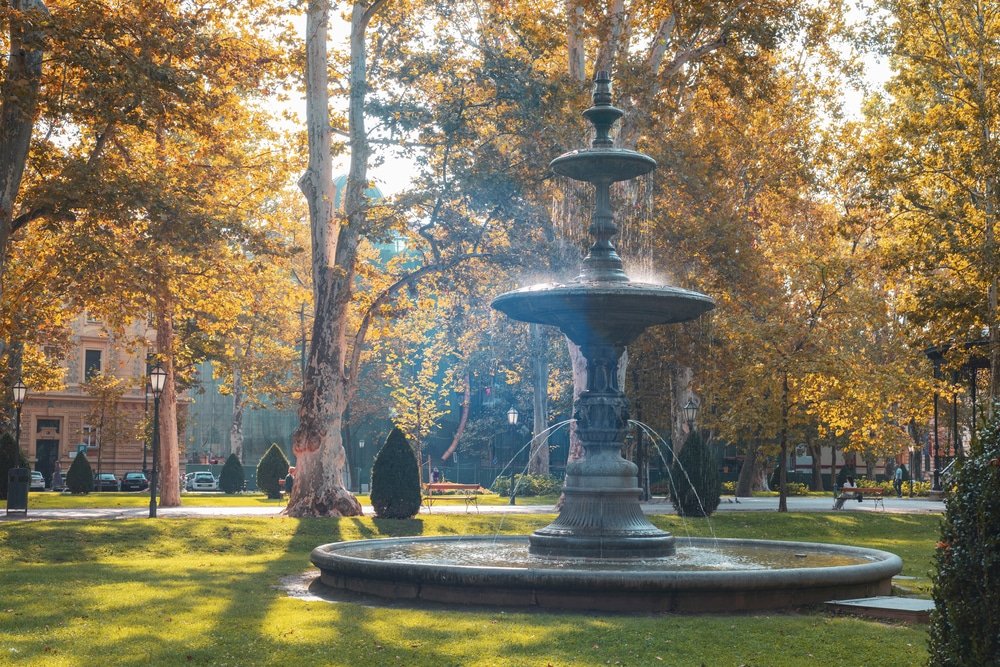
Now that you know how to spend two days in Zagreb, it’s time to begin day three. Start your day in style with a coffee at the Esplanade, a grand old hotel where you can sip coffee in chic surroundings.
Then it’s on to one of the city’s many art galleries, Strossmayer’s Gallery of Old Masters. This Renaissance palace is bursting full of pieces by old masters (as the name suggests).
If you’re interested in history, you may want to visit the archaeological museum, which houses a collection of ancient Roman artifacts and Egyptian relics.
Spend the next part of your day exploring the “Green Horseshoe” (a series of semi-linked parks), starting with Zrinjevac Park, which is just nearby. Grab a bite to eat, people-watch, and stroll.
Afterward, hop on the bus and take a 20-minute ride to Mirogoj Cemetery, the final resting place of many notable figures from Croatia’s past, from writers to composers. Often dubbed the most beautiful cemetery in Europe, it’s a peaceful place to stroll, and it has gorgeous architecture throughout.
Head back to the city for more Zagreb nightlife. This time around, you may want to try out one of the many bars and restaurants that line Tkalčićeva Street.
Brands We Use And Trust
More Time In Zagreb
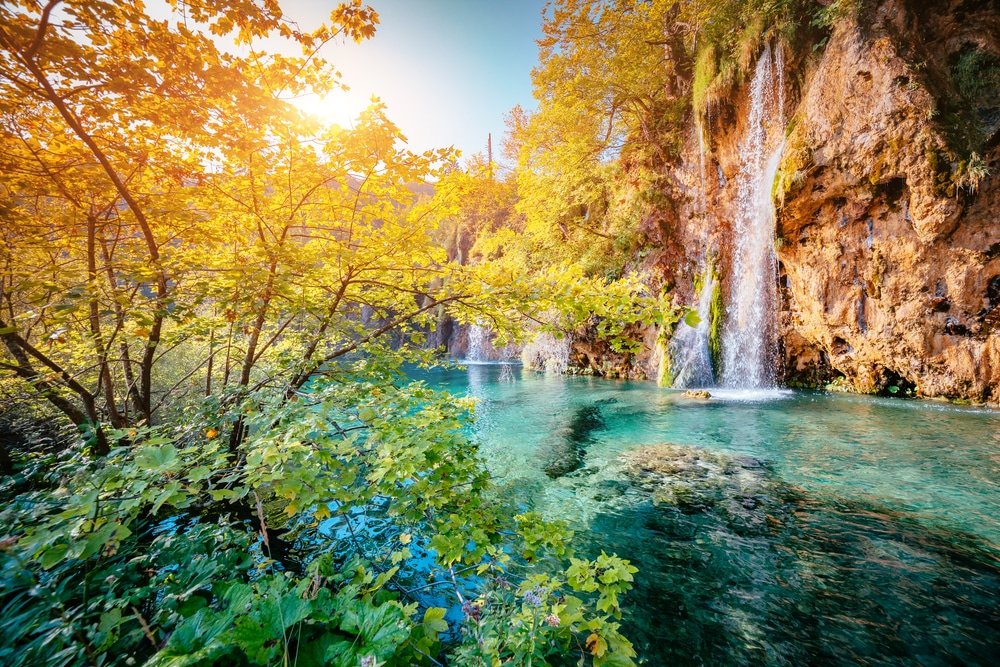
If you’ve got more days to spare than just a few days, great! You may have a week in Zagreb, or maybe even longer. In that case, it’s time to explore further because there’s plenty more to see both in the Croatian capital city and beyond if you take a day trip.
While it may only take a few days to see Zagreb and its top sights, it will take longer to explore the city’s food culture. This is your chance to take a food tour, which will involve visiting cafes and restaurants in Zagreb to sample Croatian dishes and regional fare.
Ironically, spending more time in Zagreb means spending more time outside of the city, seeing natural sights like the world-famous Plitvice Lakes National Park. For a hassle-free way to see it, I’d say go for a day tour. You could even take a trip to Dubrovnik and spend a night or two there before returning to Zagreb.
Basically, spending more time in Zagreb means getting to know the city. You’ll visit its many quirky cafes, bars, and museums—plus yet more non-quirky sights like the Zagreb City Museum.
Where To Stay In Zagreb
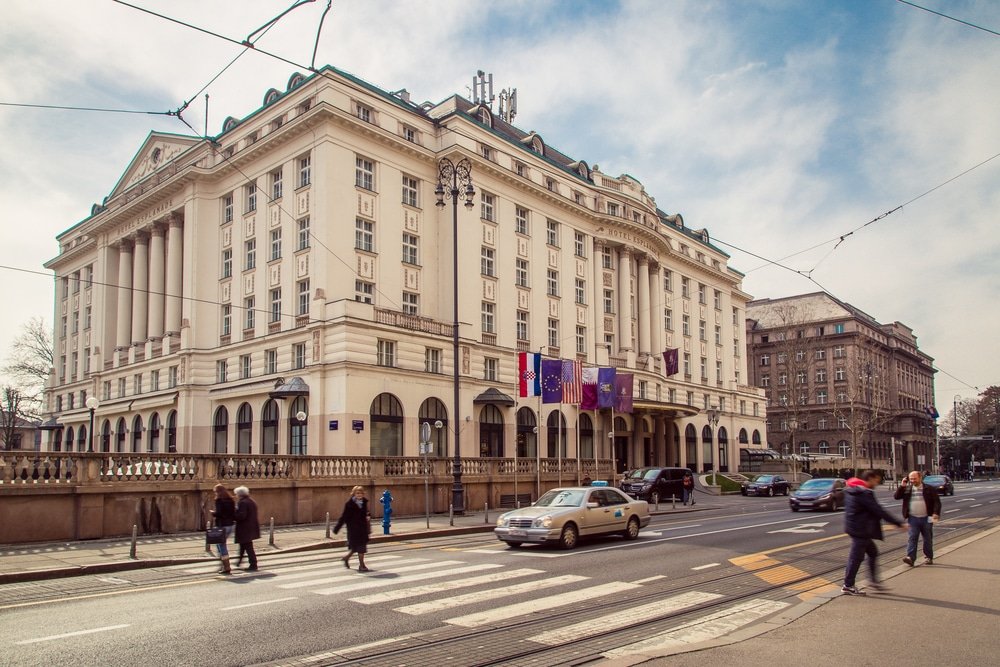
Zagreb is not short on accommodation. Here, you’ll find all sorts of hotels, from plush, 5-star icons to basic guesthouses and everything in between. But the question of exactly where you should base yourself is a good one.
If you’ve only got a short time, a weekend break, for example, then you should opt to stay somewhere in Zagreb city center.
That way, you’ll be within walking distance of the big sights. Plus, there are many options in terms of accommodation here: plush modern hotels, B&Bs, and hostels.
For a longer stay in Zagreb, try Lake Jarun. It’s more peaceful, still easy to get to the center of town, and being somewhere more “local” gives you a better insight into what makes the city tick.
Here are some of the top hotels in Zagreb to inspire your trip.
Luxury – Hotel Dubrovnik. Situated in the center of the city, in Zagreb’s main square, this polished hotel offers a modern place to stay. It provides plenty of different rooms and amenities, including a restaurant, bar, and fitness center.
Mid-range – Art Hotel Like. More of a boutique offering, this quirky place to stay in Zagreb is situated a 5-minute walk from the bustling Ban Jelacic Square. Rooms here are stylish and individually decorated with warm color palettes and wooden floors and have private bathrooms.
Budget—Stay Swanky Bed & Breakfast. This budget-friendly accommodation option in central Zagreb ticks all the boxes. Not only is it affordable, but it’s clean, comfortable, and has transport options right on the doorstep.
Tips For Planning A Trip To Zagreb
Best Time To Visit Zagreb
Unlike the Dalmatian coast of Croatia, planning a trip to Zagreb doesn’t necessarily mean going there when the weather is at its best. While the beaches and coastal towns are lovely in the summer sun, walking around a city in the height of summer isn’t as fun.
Plus, many of the attractions—the museums and galleries—are indoors, so visiting during a rainy or cold time of year won’t matter so much.
Autumn
Autumn is an ideal time of year to visit Zagreb. There are fewer tourist crowds, but temperatures are still pleasant for spending time outdoors in the city’s many green spaces or sitting outside a terrace cafe.
That said, autumn can be unpredictable. Temperatures can dip low suddenly but then be warm and bright. Locals like to cling to the last of the summer weather and spend warmer autumn days eating and drinking al fresco in the city’s bars, cafes, and restaurants.
September is still lovely, almost like an extension of summer weather.
Once the weather really does start to turn colder — think 41°F (5°C) in November — there’s still the opportunity to head inside and get cozy. On average, temperatures in October are 52°F (10°C). It also rains quite a bit in October; rain affects around half of the days in the month.
Spring

At this time of year, the city is waking up and coming out of hibernation. The temperatures start to warm up, and days get sunnier than they were in winter.
April and May bring temperatures warm enough to sit outside in the city’s parks. The average temperature for April is 49°F (9°C), with average highs of 58°F (14°C). But don’t come here expecting milder temperatures the whole time. Temperatures can still drop suddenly to as low as 39°F (4°C).
The upside of coming in spring is the fewer crowds. It’s shoulder season, before the general rush of tourists who come in summer, so you won’t have to contend with too many people on public transport, in public parks, or in bars.
Summer
Many tourists opt to visit Zagreb during summer. In fact, most people visit the city this time of year. It’s peak tourist season for Croatia as a whole, and in the capital city, it’s no different.
But this is also when local Zagreb city dwellers head out of town on their summer holidays, making their way to the beaches of the coastline.
However, compared to the coastline, temperatures are relatively mild. In June, for example, expect average highs of 73°F (22°C). By August, things have warmed up significantly, with highs of 81°F (27°C). There’s also not very much rain to speak of.
Summer in Zagreb is pleasant. There are plenty of outdoor spaces, such as restaurants and cafes with terrace seating and green, leafy parks. City dwellers like to visit Lake Jarun for fun splashing around in the lake’s waters.
Winter
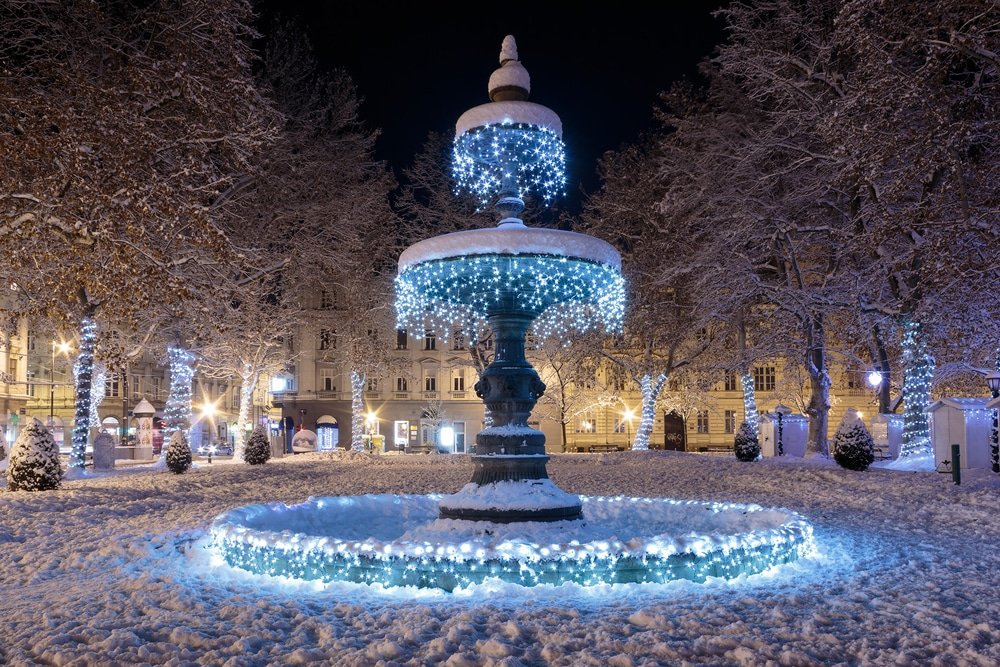
Winter is chilly. It’s definitely the time of year to take full advantage of the city’s many museums and cozy bars and restaurants. Temperatures in December, for example, only reach highs of around 41°F (5°C) with a low of 0°C (32°F). January is even colder, with average lows of 30°F (-2°C) and highs of 39°F (4°C). The sun doesn’t come out very much; it’s pretty cloudy, and there’s often a chance of snow.
Traveling to Zagreb this time of year may not sound appealing, but you’ll be rewarded with fewer tourists, a more local atmosphere, uncrowded sights, and cheaper accommodations and flights. If you visit in December, you’ll also be able to soak up the festive season’s atmosphere thanks to the giant Christmas Market in the city’s main square.
Facts about Zagreb – The Croatian Capital
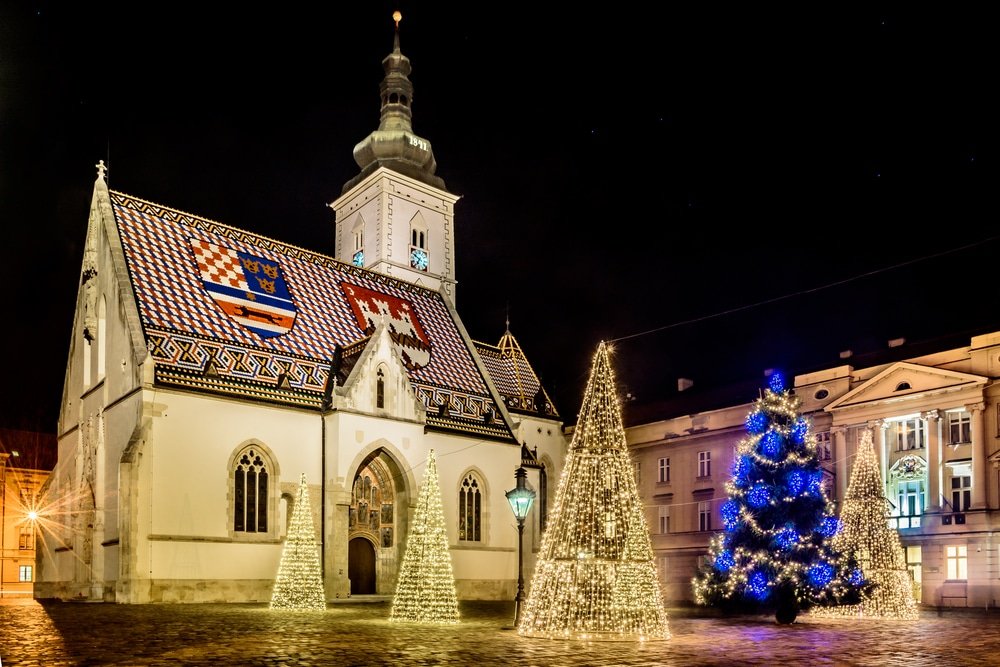
Population
As of 2019, the population of Zagreb is 806,341, making it the largest city in Croatia.
Language
Croatian is the language spoken in the city of Zagreb. There are plenty of English speakers, too.
Currency
As of January 2023, Croatia uses the euro (previously, they used the kuna). 1 Euro is approximately USD 1.09.
Plugs
Croatia uses two main plugs: type C (two round pins) and type F (two round pins plus earth clips). The standard voltage is 230 V, and the standard frequency is 50 Hz. You should definitely pack a universal adapter.
Main International Airports In Zagreb
The main airport in Zagreb is the Franjo Tuđman Airport Zagreb. It receives international flights from across Europe.
Travel Requirements For Croatia
You can travel to Croatia visa-free if you’re a US citizen or a citizen of various other countries (UK, Australia, Canada, etc.). You can stay in the country as a tourist for up to 90 days.
Public Transportation In Zagreb
For some other helpful information about Zagreb, it’s good to know about the city’s public transport system. There are several options to help you explore the capital, combining to make it a comprehensive way to get around.
Zagreb Trams

Along with Osijek, Zagreb is the only town in Croatia to boast the distinction of having its tram network. Called ZET (Zagrebački električni tramvaj), it’s been running since 1891. There are 19 different lines, 4 of which are nighttime lines only, serving a vast expanse of the city sprawl.
You buy tickets in increments of time rather than distance.
From machines, these cost €0.53 (30 minutes), €0.93 (60 minutes), and €1.33 (90 minutes). A single nighttime fare is €1.99.
If you purchase from the driver on board, then tickets cost €0.80 (30 minutes), €1.33 (60 minutes), €1.99 (90 minutes), and €1.99 for a nighttime fare. You can also buy a daily ticket, which covers you for a whole day of travel, which costs €3.98.
You can also purchase multi-day tickets:
- 3 days — €9.29
- 7 days — €19.91
- 15 days — €26.54
- 30 days — €53.09
Alternatively, you can use contactless pay on trams via the Moj ZET app (on Google Play and the App Store).
Buses In Zagreb
Zagreb also has an excellent public bus network. Also run by ZET, the bus network reaches where the tram system doesn’t go. The buses also stop at corresponding stations, meaning you can use both the trams and buses to get around efficiently.
The fares for buses in Zagreb are the same as for the city’s trams (above).
Buses run from 4 a.m. to midnight. They’re usually on time, but the schedules can be disturbed by public holidays.
While not actually public transport, Zagreb also has a hop-on, hop-off tourist bus. This bus runs on a circular route around the city’s main sights. There are five departures daily, and tickets cost €20.
Trains
There isn’t a train network that serves Zagreb, but the city is a transport hub for the rest of Croatia. Therefore, it makes for a convenient jumping-off point for exploring the rest of the country.
The large Zagreb Glavni Kolod Train Station is the central station (around a 10-minute walk from the main square). It offers multiple departures for cities and towns throughout Croatia and has shops and cafes.
Funicular
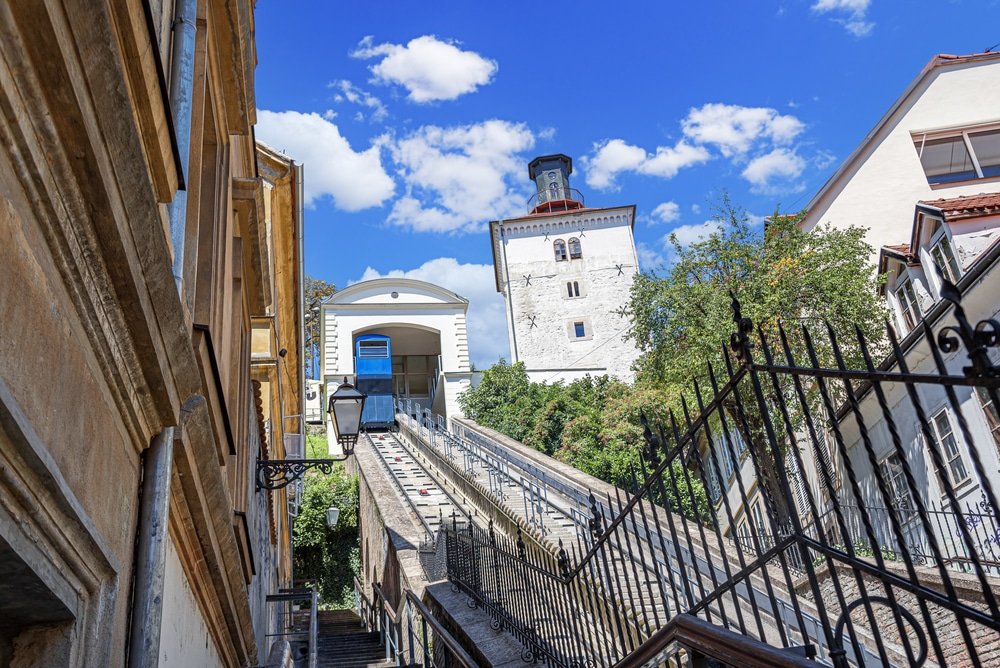
The city’s ZET transport network also runs a funicular. It opened in 1890 and is the shortest and oldest (as well as steepest) in the world. It takes just 64 seconds to get from A to B.
The funicular, which takes just 28 passengers at a time, leaves every 10 minutes, connecting the Lower Town with the Upper Town. It runs from 6:30 a.m. to midnight every day. Fares are €0.66 one way, with an emergency ride fare costing €3.32.
Move This Adventure To Your Inbox & Get An Instant Freebie

No spam. Unsubscribe at any time.
Final Word On Zagreb
There you have it—the end of our article on how many days in Zagreb you’ll need to fully appreciate the city. One day will allow you to do a whirlwind walking tour. Spend two days here, and you’ll see the main sights and some nightlife.
Three days will allow you to see yet more of the city and its surroundings. But if you’ve got longer, lucky you—you’ll get to experience more of what makes this quirky capital city a fantastic place to spend your time in Croatia.
- Cool Days Trips From Zagreb
- Taking The Split To Zagreb Train
- Where To Go Hiking In Zagreb
- Zagreb Christmas Market Guide
- Unique Museums In Zagreb
- Where To Stay In Zagreb
- Dental Implant Vacation – Zagreb Is Where It’s At!
- Getting From The Zagreb Airport To The City Center
- Split Or Zagreb – Which To Visit
- Is Zagreb Worth Visiting?
- Zagreb To Plitvice Lakes National Park
- Things To Know Before Visiting Dubrovnik
- 10 Day Itinerary In Croatia

